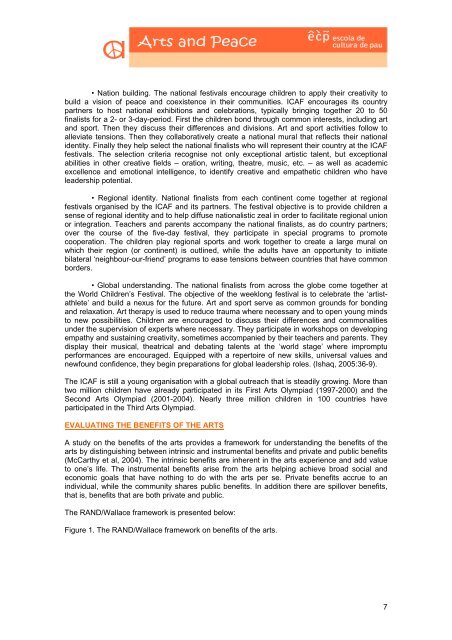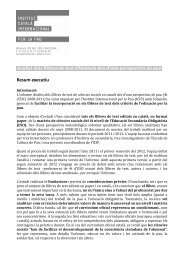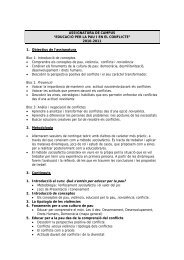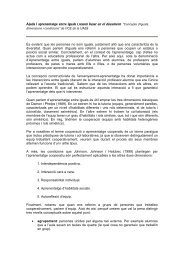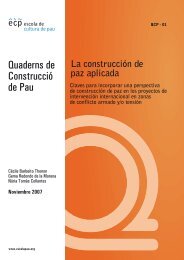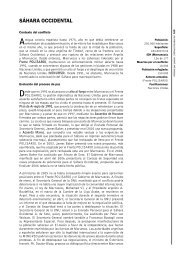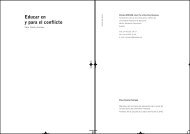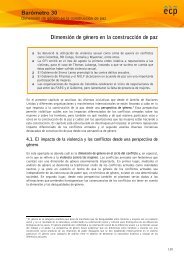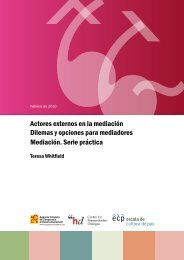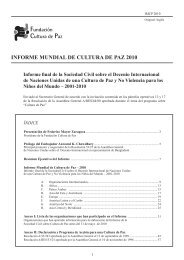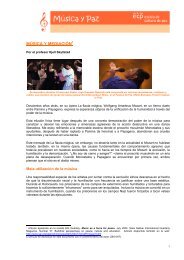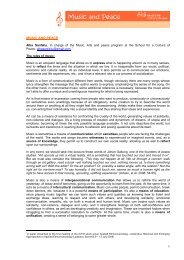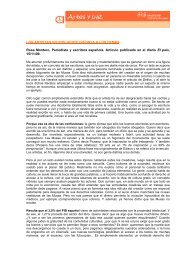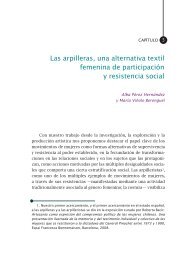PROSPERITY AND PEACE THROUGH ART
PROSPERITY AND PEACE THROUGH ART
PROSPERITY AND PEACE THROUGH ART
Create successful ePaper yourself
Turn your PDF publications into a flip-book with our unique Google optimized e-Paper software.
• Nation building. The national festivals encourage children to apply their creativity to<br />
build a vision of peace and coexistence in their communities. ICAF encourages its country<br />
partners to host national exhibitions and celebrations, typically bringing together 20 to 50<br />
finalists for a 2- or 3-day-period. First the children bond through common interests, including art<br />
and sport. Then they discuss their differences and divisions. Art and sport activities follow to<br />
alleviate tensions. Then they collaboratively create a national mural that reflects their national<br />
identity. Finally they help select the national finalists who will represent their country at the ICAF<br />
festivals. The selection criteria recognise not only exceptional artistic talent, but exceptional<br />
abilities in other creative fields – oration, writing, theatre, music, etc. – as well as academic<br />
excellence and emotional intelligence, to identify creative and empathetic children who have<br />
leadership potential.<br />
• Regional identity. National finalists from each continent come together at regional<br />
festivals organised by the ICAF and its partners. The festival objective is to provide children a<br />
sense of regional identity and to help diffuse nationalistic zeal in order to facilitate regional union<br />
or integration. Teachers and parents accompany the national finalists, as do country partners;<br />
over the course of the five-day festival, they participate in special programs to promote<br />
cooperation. The children play regional sports and work together to create a large mural on<br />
which their region (or continent) is outlined, while the adults have an opportunity to initiate<br />
bilateral ‘neighbour-our-friend’ programs to ease tensions between countries that have common<br />
borders.<br />
• Global understanding. The national finalists from across the globe come together at<br />
the World Children’s Festival. The objective of the weeklong festival is to celebrate the ‘artistathlete’<br />
and build a nexus for the future. Art and sport serve as common grounds for bonding<br />
and relaxation. Art therapy is used to reduce trauma where necessary and to open young minds<br />
to new possibilities. Children are encouraged to discuss their differences and commonalities<br />
under the supervision of experts where necessary. They participate in workshops on developing<br />
empathy and sustaining creativity, sometimes accompanied by their teachers and parents. They<br />
display their musical, theatrical and debating talents at the ‘world stage’ where impromptu<br />
performances are encouraged. Equipped with a repertoire of new skills, universal values and<br />
newfound confidence, they begin preparations for global leadership roles. (Ishaq, 2005:36-9).<br />
The ICAF is still a young organisation with a global outreach that is steadily growing. More than<br />
two million children have already participated in its First Arts Olympiad (1997-2000) and the<br />
Second Arts Olympiad (2001-2004). Nearly three million children in 100 countries have<br />
participated in the Third Arts Olympiad.<br />
EVALUATING THE BENEFITS OF THE <strong>ART</strong>S<br />
A study on the benefits of the arts provides a framework for understanding the benefits of the<br />
arts by distinguishing between intrinsic and instrumental benefits and private and public benefits<br />
(McCarthy et al, 2004). The intrinsic benefits are inherent in the arts experience and add value<br />
to one’s life. The instrumental benefits arise from the arts helping achieve broad social and<br />
economic goals that have nothing to do with the arts per se. Private benefits accrue to an<br />
individual, while the community shares public benefits. In addition there are spillover benefits,<br />
that is, benefits that are both private and public.<br />
The R<strong>AND</strong>/Wallace framework is presented below:<br />
Figure 1. The R<strong>AND</strong>/Wallace framework on benefits of the arts.<br />
7


